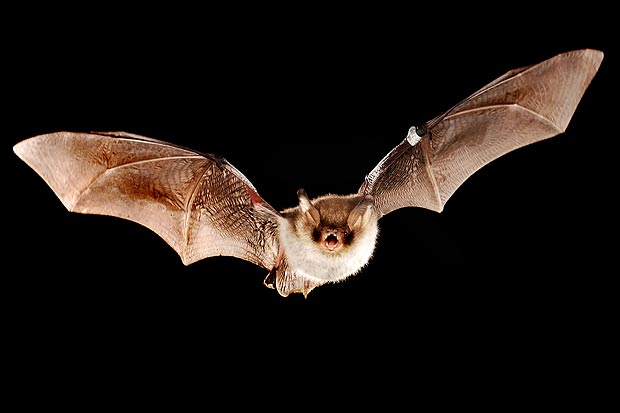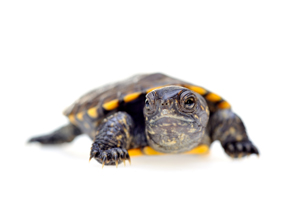
News You Can Use
April is National Immunization Month
6 REASONS TO GET HPV VACCINE FOR YOUR CHILD
1. HPV is a common virus that infects men and women.
80% of people will get an HPV infection in their lifetime.
Most HPV infections will go away on their own. Infections that don’t go away can cause precancers and cancers.
2. HPV vaccination works.
Infections with HPV types that cause most HPV cancers and genital warts have dropped 71 percent among teen girls.
3. HPV vaccination prevents cancer.
More than 29,000 cases of cancers each year could be prevented with HPV vaccination.
Same as the average attendance for a baseball game.
For years, the HPV vaccine has been controversial among parents. Now, the Florida legislature is pushing to make it mandatory for public school students. Jason Mendelsohn, a cancer survivor in Orlando, doesn’t think this is a terrible idea.
Mendelsohn was 44-years-old when he got the scare of his life. “I put my hand on my face to ponder a question, moved my hand down to my neck. I was one minute into a securities exam and I felt a bump,” he said. That “bump” turned out to be stage four HPV-related oral cancer. “When they told me I had HPV-related oral cancer and I likely got it from oral sex from a woman in college 20 years ago, I couldn’t believe it. I never slept with a hooker,” he said. Immediately Mendelsohn, a husband and father of three, thought he was going to die. “I ended up making videos to each of my three kids. They went something like this: one day you’re going to get married, I’m not going to be there, and this is what is important.” Mendelsohn is sharing the ugly truth of his journey in hopes of getting others’ attention. “I had a radical tonsillectomy, neck dissection, 42 lymph nodes removed, followed by seven weeks of chemo, radiation and a feeding tube,” Mendelson said. “I had third-degree burns in my throat. Couldn’t swallow my own saliva for a month. Gagging and choking 20 times a day.” Mendelsohn is now cancer-free and has a new lease on life. “I try not to have a bucket list I try to have a list of things I want to accomplish and I am working on those,” he said. “If you have the ability to stop your kids from ever ending up with this cancer, I almost feel like it’s unconscionable that anyone would ever not give the vaccine to their kids.”
Mendelsohn started a website called SupermanHPV.com to raise awareness and help others.
4. Preventing cancer is better than treating cancer.
HPV infections can cause many types of cancer, but there is only cervical cancer screening.
HPV vaccination is prevention for the other types of cancer caused by HPV infections.
5. Your child can get the HPV vaccine when they receive the other preteen vaccines.
Three vaccines are recommended for 11-12 year olds to protect against the infections that can cause meningitis, HPV cancers, and whooping cough.
6. Preventing cancer is easier than ever before
Data now shows 2 doses of HPV vaccine provide similar protection to 3 doses, when given before the 15th birthday.
6 OUT OF 10 parents are choosing to get the HPV vaccine for their children.
Talk to your child’s doctor about HPV cancer prevention at ages 11-12
When Michele, a 45 year old Mother of three was diagnosed with late-stage cervical cancer, she took this as a call-to-action. She decided that she would travel to India to paddle board over 700 miles down the Ganges River, spreading awareness about this disease that was going to kill her and breaking a World Record in the process.
Some of her friends and family doubted her decision to make the trip. They were concerned for her health and they understandably wanted to spend as much time with her as possible. But Michele felt a higher calling. She had a soft spot for the people of India and she knew that India had the highest mortality rate from cervical cancer in the World. More than 50,000 Indian women die needlessly every year from this preventable cancer. So, she packed her bags and explained to her kids why this was so important for her. They were sad to see her go, but they understood their Mom’s final mission.
Cervical Cancer is caused by a highly prevalent, sexually transmitted virus called HPV. 80% of ALL people under 50 years of age will be exposed to HPV at some point in their lives. Globally, HPV causes many types of cancers in both Men and Women. This is why Michele dreamed of making an even bigger impact, not just in India but all over the World.
Read more about her story here: https://www.ladyganga.org/
To check the Air Quality Index for Paducah, please click the link below:
http://eppcapp.ky.gov/daq/
Zika Virus
There have been 6 confirm cases of Zika Virus in Kentucky. These cases have all been travel related, none of which were locally acquired cases. Zika virus disease (Zika) is a disease caused by the Zika virus, which is spread to people primarily through the bite of an infected Aedes species mosquito. The most common symptoms of Zika are fever, rash, joint pain, and conjunctivitis (red eyes). The illness is usually mild with symptoms lasting for several days to a week after being bitten by an infected mosquito. People usually don’t get sick enough to go to the hospital, and they very rarely die of Zika. For this reason, many people might not realize they have been infected. However, Zika virus infection during pregnancy can cause a serious birth defect called microcephaly, as well as other severe fetal brain defects. Once a person has been infected, he or she is likely to be protected from future infections. To learn more, visit this website.

Bats: Kentucky’s Natural Resources
Warm summer weather is here and so are insects and bats. It is important to remind the public that it is not acceptable for bats to be residences or public buildings. Bats are very good at getting in small cracks and crevices in homes but are very poor at exiting them. I attach a bat poster for your education and further dissemination. Click here to view Bat Poster_2015

A Hunger Pang We Can’t Ignore
Providing children with access to nutritious food beyond the school year can have a lasting impact on a child’s health and academic achievement.
- Students who don’t get enough nutrition over the summer months are more likely to fall behind their peers once the school year starts.
- Students from low-income families experience a greater “summer slide” than their peers, returning to school two months behind in reading.
- Low-income families have to spend an additional $300 on groceries each month during the summer, forcing many parents to make tough choices between food and medical care, utilities, and transportation.
- Many families struggling with hunger turn to cheap, calorie dense foods with little nutritional value. As a result children from low-income families often gain weight two to three times faster during the summer than during the school year.
- Food insecurity makes children more susceptible to chronic diseases like asthma, type 2 diabetes, and heart disease.

Bring the Farm to Summer
Promoting summer meals at farmers’ markets is an innovative way to provide fresh, local food to children and their families. Because seasonal produce is freshest in the summertime, utilizing the harvest from a market is a great way to source tasty, healthy ingredients for summer meals. Markets are unique, family-friendly gathering places, where people can connect to their local community, listen to music, sample new foods, and shop for produce.
Kentucky is proud to offer two KY Kids Eat program sites located at farmers’ markets, with several others interested. At the Letcher County Farmers Market and Berea Farm Stand, children can sit together and enjoy their summer meal prepared with food straight from local farmers. Nearly 40 markets now accept SNAP/EBT and many participate in the Double Dollars program, making local food an affordable option for lower income families. Parents are encouraged to shop for fruits and vegetables while children eat, and together they can experience the fun activities and entertainment of the market.
Locate a KY Kids Eat summer meal site today by calling the National Hunger Hotline at 1-866-3-HUNGRY (1-877-8-HAMBRE), texting FOOD to 877-877, or visitingwww.KyKidsEat.org. Summer meal programs welcome volunteers for tasks like food transportation, meal site set up and clean up, education, and recreation. Residents interested in volunteering should visit www.KyKidsEat.org for more information.

The Trouble With Tiny Turtles
According to studies from the Centers for Disease Control and Prevention, contact with reptiles (such as turtles, snakes, and lizards) can be a source of human Salmonella infections. Reptiles can carry Salmonella germs and still appear healthy and clean. Salmonella germs are shed in reptile feces (droppings) and can easily contaminate their bodies and anything in areas where these animals live. Reptiles that live in tanks or aquariums can contaminate the water with germs, which can spread to people. Turtles with a shell length of less than 4 inches are a well-known source of human Salmonella infections, especially among young children. For more information, click here.
